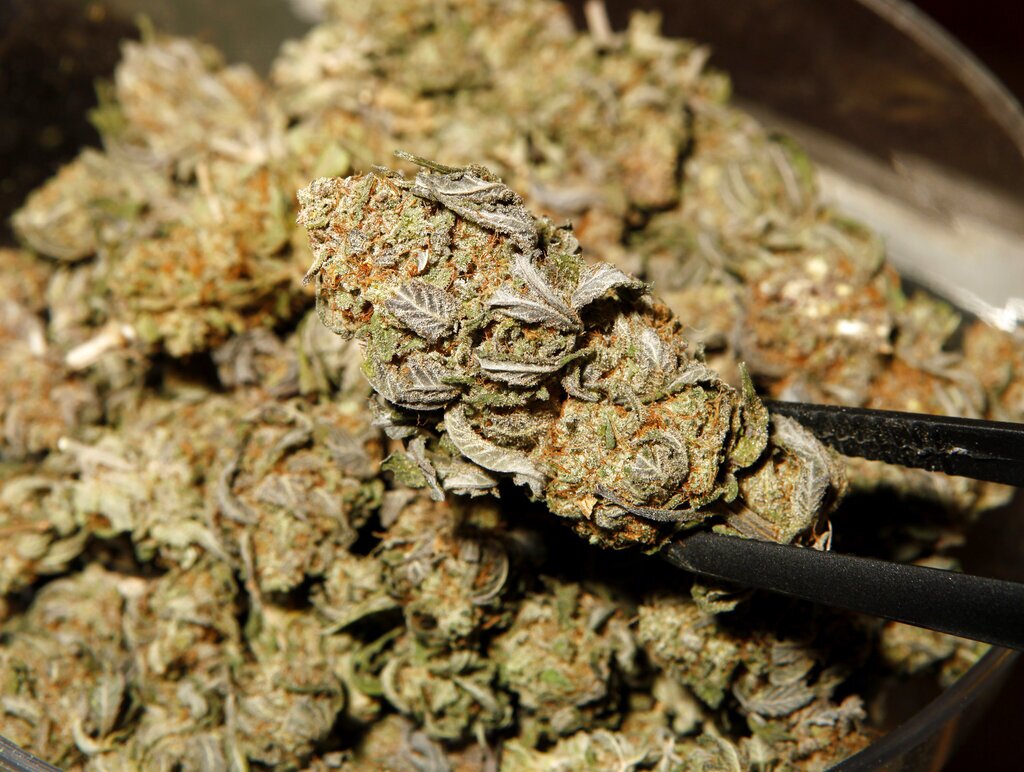LAS VEGAS (KTNV) — Whether people smoke it, eat it or vape it, marijuana use keeps getting more and more mainstream.
But how do you know when you're too high to drive? There's still uncertainty over what makes someone over the legal limit.
That uncertainty could soon be addressed by the Nevada Supreme Court with the Zaon Collins case. In December 2020, Collins, a UNLV basketball recruit, crashed into 52 year-old Eric Echevarria, killing him. Collins was charged with felony DUI — but not for alcohol. Las Vegas Metropolitan Police said he was under the influence of marijuana. But there's no straightforward measure for that, which begs the question, how high is too high to drive?

"He got behind the wheel high. Very high," says Ann Marie Echevarria. "And he chose to go down this street. He swerved out of the road and hit my husband."
For victims' families, DUI cases are straightforward. Echevarria knows her husband died in a car crash with Zaon Collins. For her, it's open and shut.
"I would not let my son have a car if that's the way he behaved in a car," she said. " When you get behind the wheel, you are now in a weapon. And if you're high, you are a mass destruction weapon. And for him driving high...he took my husband and my son's father."
In Collins' arrest report, police say he was driving approximately 88 miles per hour in a 35-mile-per-hour residential area.
"When he hit him so hard, he airborned his car, to the point where the roof of his car hit the wall," said Evelyn Sulrzycki, Echevarria's sister.
The arrest report says police found a "jar containing a green leafy substance" in Collins' car, and that Collins appeared to be high. The district attorney says Collins tested positive for 3.0 nanograms per milliliter of THC (the main psychoactive compound in marijuana) in his blood. Anything above 2 nanograms was considered impaired under Nevada law when the crash occurred.
"Now what Zaon Collins is saying is 'wait a second,'" said attorney Chip Seigel, who isn't working on the Collins case but specializes in DUI law.
"Nevada was 2 nanograms," Seigel said. "Other states were 10. Some states were, you have to prove that you're under the influence."

13 Action News spoke with Collins' attorney David Chesnoff about that a year ago, shortly after the crash.
"You're right about the difference between Nevada and other places, and that if it was somewhere else, he wouldn't have been charged," Chesnoff said.
Nevada got rid of the 2-nanogram law last July, because it was argued that marijuana metabolites can stay in a person's system for several days or even weeks after consumption. In other words, broken down chemicals from THC are still in the body — but that doesn't mean a person is high.
13 Investigates: Powerful engines and poor decisions are a deadly combination
"If you have somebody who is a daily user and they, you know, smoked on Tuesday and now it's Thursday and they didn't have anything on Wednesday, then certainly in their system, they could be above the 2 nanogram level," Seigel said.
The change in the law means now prosecutors can't just point to a number. They must also demonstrate, "that a person was under the influence of marijuana to a degree which rendered him or her incapable of safely driving," says Seigel. "That was the standard for years."
The Collins case is headed to the Nevada Supreme Court, where his lawyers will challenge both Nevada's old and new marijuana DUI laws as unconstitutional.
"I just don't think the science has caught up yet," Seigel said.
Siegel says the science doesn't even exist yet to show whether a specific amount of THC, in nanograms, means a person is impaired and too high to drive safely.
He says we know all about that with alcohol, but comparing booze to marijuana doesn't work.
Research on the correlation between blood alcohol content and behavior goes back decades, all the way to the 1970s.

"Over the years, there's been so much scientific evidence and there have been tests that are performed — physical tests on people — that society got comfortable moving from .15 down to .10 down to a .08," Siegel said.
It's scientifically understood that anyone with a blood alcohol content of .08 or more is too drunk to drive.
"They tried to do that with marijuana, and quite frankly, it just hasn't happened yet," Seigel said.
He says marijuana hasn't been legal for long enough to support meaningful studies, which results in laws based on arbitrary measures.
"Maybe one day NHTSA or other government agencies, other scientific agencies, will become comfortable in saying, 'OK, this is the level that anybody who has marijuana in his system is just too high to drive,'" says Seigel. "But right now, we just don't have that number."
Even though the law now is different than when Zaon Collins crashed, his lawyers claim it doesn't matter. They argue that when a law is changed to narrow the scope of a criminal statute before a conviction becomes final, due process requires the change be applied to that defendant.
Find more investigative reporting from 13 Investigates at ktnv.com/13-investigates.












